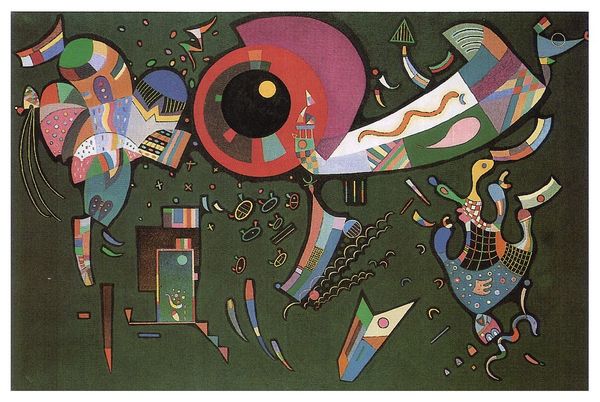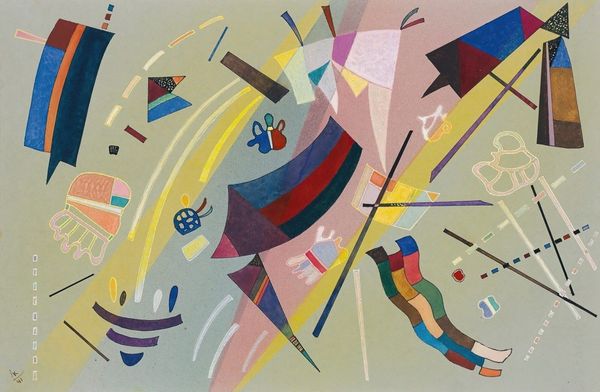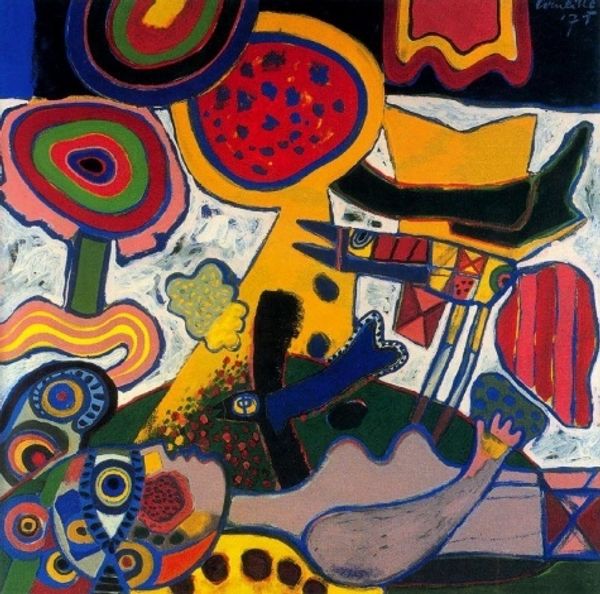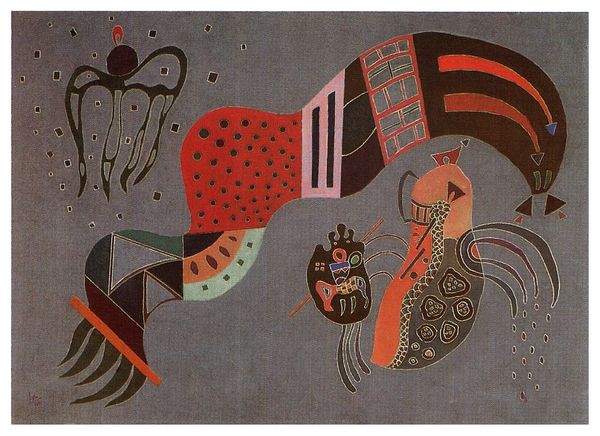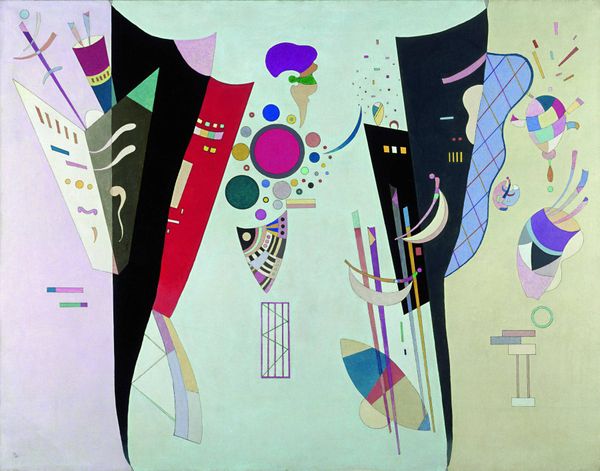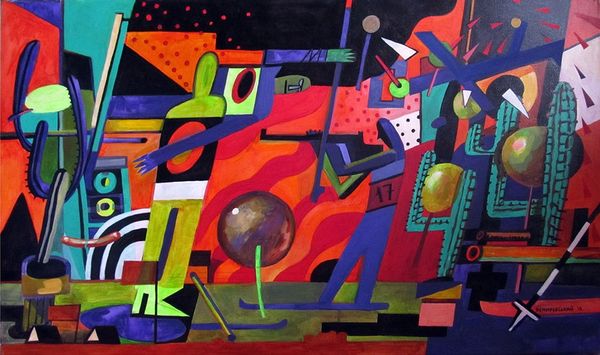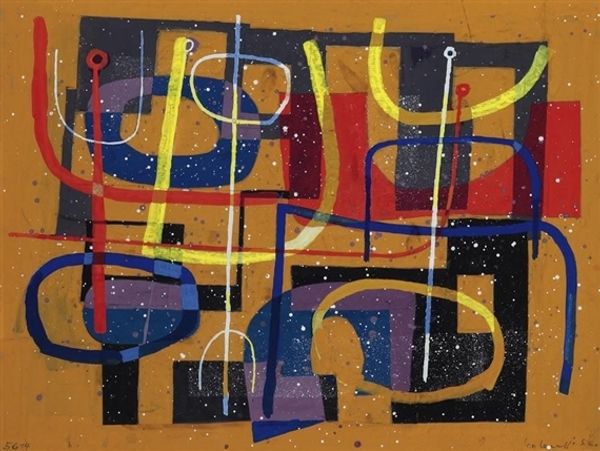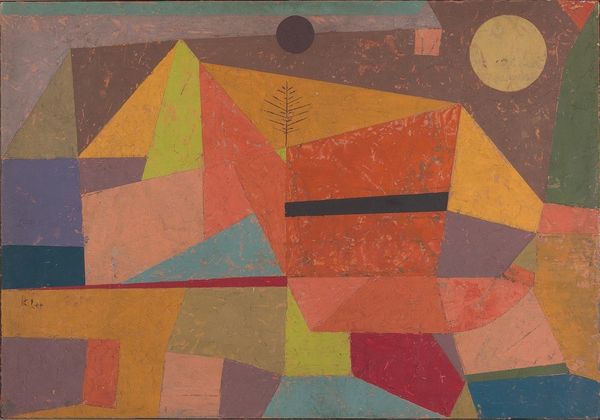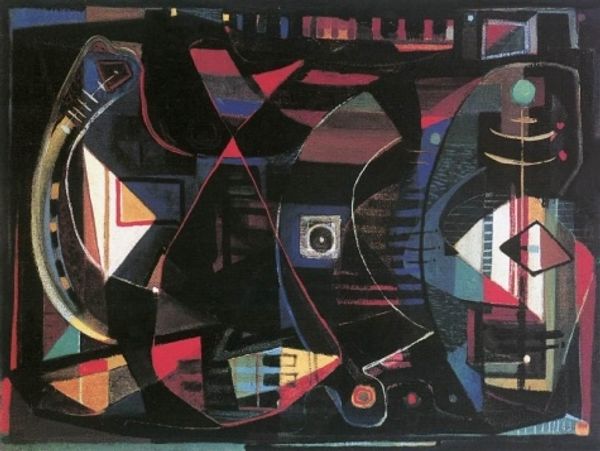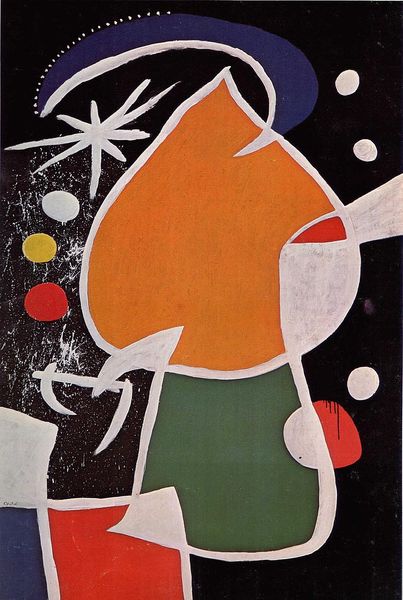
Dimensions: 130 x 195 cm
Copyright: Public domain
Curator: Wassily Kandinsky's "Composition X," painted in 1939, is currently housed in the Kunstsammlung Nordrhein-Westfalen in Düsseldorf. The artist utilized acrylic paint to construct the work, presenting a unique abstract landscape. What's your first impression of this composition? Editor: Immediately, the interplay of geometric shapes and the limited color palette gives off a somewhat uneasy yet organized sensation. It feels simultaneously playful and deeply structured. The black background makes the forms feel suspended, doesn't it? Curator: It’s fascinating to consider that Kandinsky's engagement with geometric forms, specifically circles, triangles, and squares, stemmed from his belief in their inherent spiritual properties. He thought about the connections between forms and color as almost a manufacturing process for affecting the soul. Editor: Exactly. But within that spiritual framework, how does the composition respond to or challenge societal structures? I wonder about the implications of embracing non-representational art during a historical moment overshadowed by the rise of totalitarian regimes. The forms become allegories, disrupting traditional means of communication and engaging viewers in a more philosophical and personal contemplation. Curator: He very explicitly eschewed representational imagery. Kandinsky's exploration of abstraction can also be seen as a pursuit of artistic autonomy—the artist becoming free from depicting literal reality. Editor: Which certainly resonated with the early twentieth-century interest in exploring inner landscapes and escaping from established paradigms. I believe there's a lot here for people to grapple with today, given all of the ongoing questions about politics, representation, and artmaking. Curator: Yes, considering the conditions of production of an artwork is fundamental to understanding how an artist uses available means to express the world around them. It leaves you considering how even pure form can represent very radical ideas. Editor: Indeed. This piece pushes viewers to engage critically with historical circumstances, questioning accepted methods and modes of representation to see alternative worlds and narratives.
Comments
No comments
Be the first to comment and join the conversation on the ultimate creative platform.
